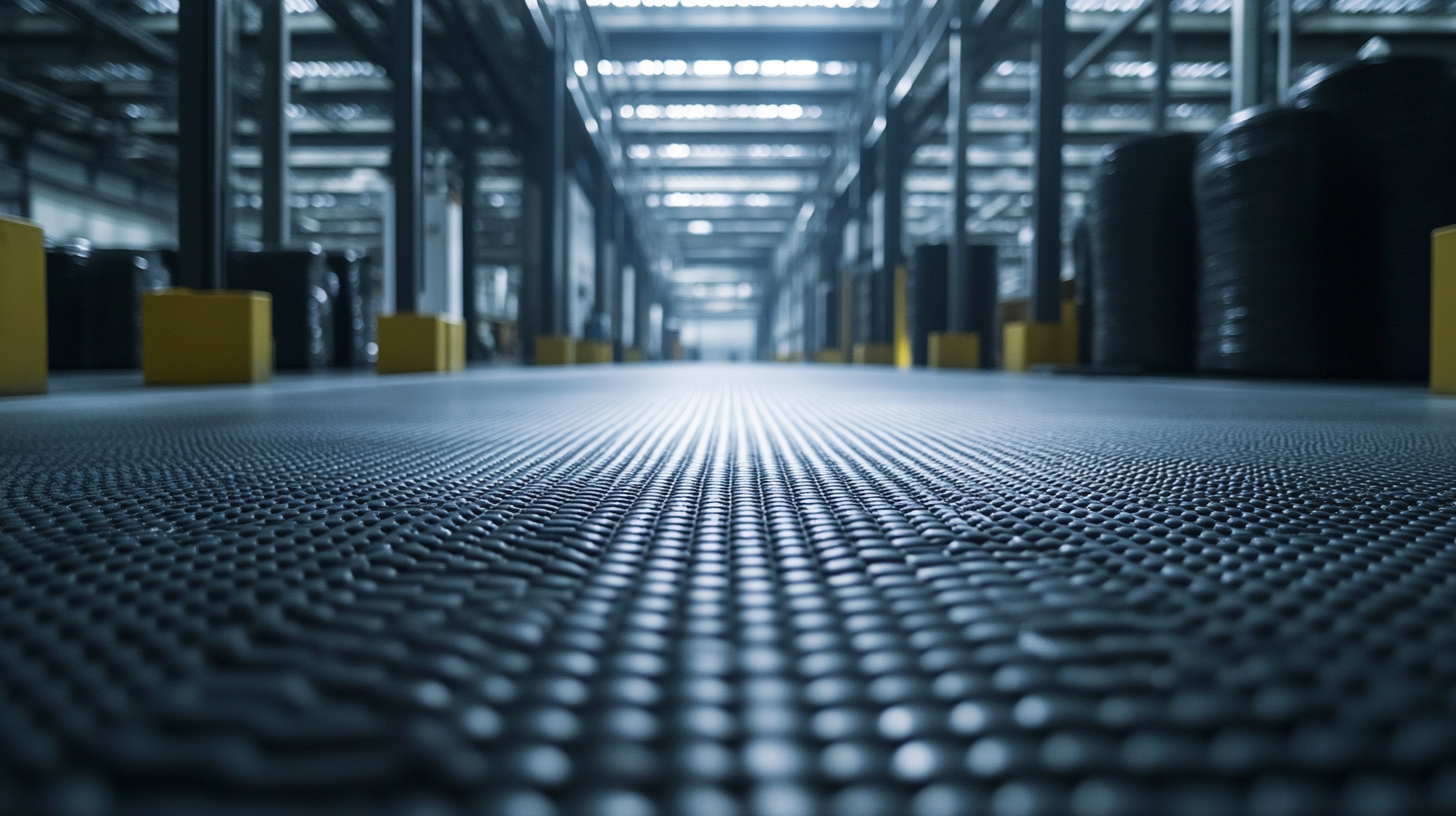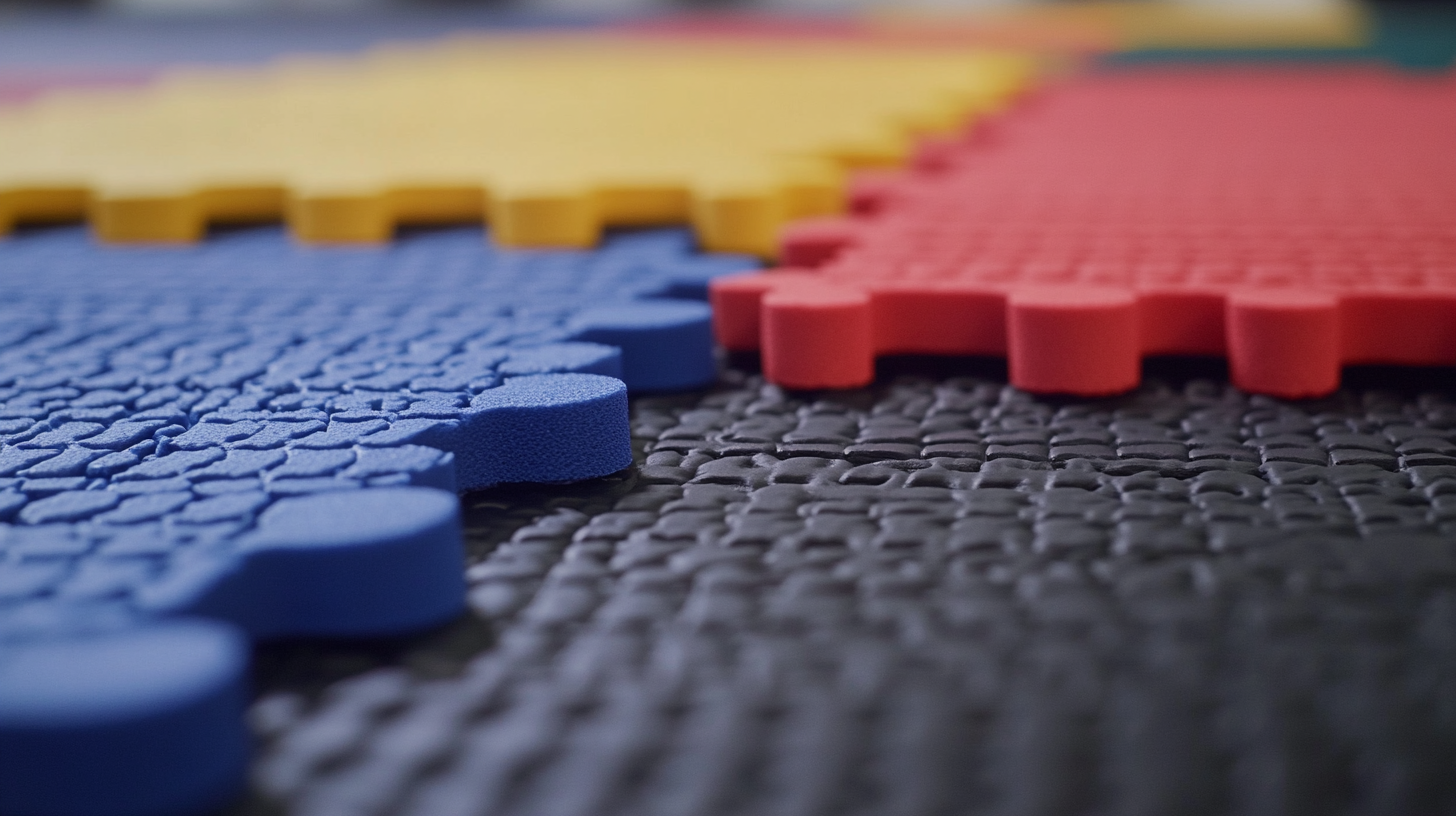The advent of foam floor mats has significantly transformed the landscape of global supply chains, introducing a versatile solution to multiple industries. Initially recognized for their safety and comfort in residential and commercial settings, foam floor mats have evolved into essential components in various sectors, including logistics, manufacturing, and healthcare. As companies seek to optimize their operations, the demand for high-quality foam floor mats has surged, leading to innovations in materials, design, and manufacturing processes. This evolution reflects broader trends in globalization and consumer preferences, prompting a reevaluation of how these products are sourced and distributed on a global scale.
In recent years, the role of foam floor mats in supply chains has expanded beyond mere practicality to encompass considerations of sustainability and efficiency. With advancements in technology and production techniques, manufacturers are now able to create eco-friendly options that appeal to environmentally conscious consumers while enhancing performance. Furthermore, the growing importance of ergonomic workspaces has spurred innovations that ensure comfort without compromising functionality. As we delve into the evolution of foam floor mats within global supply chains, we will explore their impact on productivity, safety, and sustainability, underscoring their significance in today's dynamic market landscape.

The historical development of foam floor mats in manufacturing is a fascinating journey that reflects broader trends in consumer needs, safety standards, and material advancements. Initially designed for industrial applications, foam mats have evolved significantly to accommodate various sectors, especially the growing market of children's products. Early on, these mats were primarily used in warehouses and factories to reduce fatigue for workers, but their soft and cushioned nature soon attracted the attention of manufacturers focusing on play areas for infants and toddlers.
As awareness of the importance of safe play environments increased, so did the innovation surrounding foam floor mats. Manufacturers began to explore different materials and textures to enhance safety and comfort. The introduction of non-toxic, easy-to-clean foam variants became a priority for families, particularly as parents sought products that could withstand spills and playtime mishaps while being gentle on young children’s skin. This shift towards safety and practicality has not only diversified the types of foam mats available but has also encouraged manufacturers to adopt eco-friendly practices in their production processes.
Moreover, today’s foam floor mats come in a multitude of designs and colors, catering to the creative demands of both parents and children. Modern mats are more than just protective surfaces; they serve as vibrant play areas that stimulate a child’s imagination. From educational patterns that promote learning to engaging textures that invite exploration, the evolution of foam floor mats illustrates a commitment to enhancing the overall experience of play, marking a significant milestone in the intersection of safety, comfort, and creativity in manufacturing.

The evolution of foam floor mats has been significantly influenced by advancements in materials and technologies. One of the most notable changes in recent years has been the shift towards eco-friendly materials. Traditional mats often relied on petroleum-based foams, which raised concerns regarding sustainability and environmental impact. Today, manufacturers are increasingly incorporating recycled materials and bio-based foams, such as thermoplastic elastomers (TPE) and polyurethane, which not only reduce environmental footprints but also enhance durability and comfort.
In addition to material innovation, manufacturing technologies have transformed the production of foam mats. The introduction of digital printing techniques allows for intricate designs and patterns, catering to diverse consumer preferences. Furthermore, techniques like foam lamination and advanced cutting methods enhance the precision and quality of the final products. These technological improvements are driving down production costs while increasing the customization options available to consumers, making foam mats more accessible across various segments, from home use to professional environments.
Moreover, the role of safety features is becoming paramount in the development of foam floor mats. Modern mats are often designed with anti-slip surfaces and shock-absorbent properties, catering to specific needs in industries such as fitness and early childhood education. As the global supply chain adapts to these trends, the convergence of innovative materials and cutting-edge technologies continues to redefine the marketplace, offering consumers high-performance products that marry functionality with aesthetic appeal.
The role of foam floor mats in enhancing safety and efficiency within global supply chains cannot be overstated. These mats are designed to provide a cushioned surface that reduces the risk of slips, trips, and falls, which are among the most common workplace injuries. In environments such as warehouses, factories, and distribution centers, where heavy machinery and foot traffic are prevalent, the importance of a stable and secure walking surface becomes crucial. By absorbing shocks and minimizing the impact on joints, foam floor mats not only protect employees but also contribute to overall workplace morale and productivity.
Moreover, foam floor mats play a significant part in optimizing operational efficiency. The ergonomic benefits offered by these mats lead to reduced fatigue for workers, allowing them to perform tasks for longer periods without discomfort. In addition, their lightweight and versatile nature makes them easy to transport and install, adapting seamlessly to various workspaces. The use of foam floor mats can also help delineate work zones, ensuring that employees are aware of potential hazards and maintaining organized work environments.
The evolution of foam floor mats reflects the growing awareness of workplace safety and operational effectiveness. As global supply chains continue to expand, the incorporation of innovative safety solutions like foam floor mats is essential. Their ability to enhance both safety and productivity highlights the critical role they play in fostering a work culture that prioritizes the well-being of employees while driving operational success.
The evolution of foam floor mats in global supply chains has increasingly been influenced by sustainability trends, particularly the growing demand for eco-friendly materials. As consumers and businesses become more environmentally conscious, manufacturers are reevaluating their production processes and material sources. Today, many companies are shifting towards biodegradable and recycled materials, prioritizing both functionality and reduced environmental impact.
One significant trend is the use of plant-based foams, which offer a viable alternative to traditional petroleum-based materials. These bio-based materials not only minimize carbon footprints but also provide excellent durability and resilience, making them suitable for high-traffic areas. Additionally, innovations in recycling technologies are allowing manufacturers to repurpose old foam mats, transforming them into new products rather than allowing them to end up in landfills.
As the industry progresses, we are witnessing a rise in certifications for eco-friendly practices, which help consumers identify sustainable options. Brands are investing in transparency regarding their supply chains, sharing information about where materials are sourced and how products are manufactured. This shift towards sustainability is not just a trend but a necessary evolution in the foam mat industry, reflecting a broader commitment to environmental stewardship in global supply chains.
The foam floor mat industry is on the brink of significant innovation as manufacturers embrace new technologies and materials to enhance functionality and design. One of the most notable trends is the shift towards eco-friendly and sustainable materials. Biodegradable and recyclable foams are gaining popularity, catering to environmentally conscious consumers. This shift not only meets regulatory requirements but also appeals to a larger market that values sustainability. In addition, brands are enhancing their product lines by incorporating antimicrobial treatments that keep floor mats cleaner and safe for family use, catering to growing health and hygiene concerns.
Another exciting development is the incorporation of advanced technologies into foam floor mat design. Smart mats equipped with sensors can track foot traffic and usage patterns, providing valuable insights for businesses and consumers alike. For example, gyms and fitness studios can use this data to optimize their space and improve customer experiences. Furthermore, innovative designs that focus on ergonomic benefits are entering the market, providing enhanced support for physical activities and reducing the risk of injuries. As these technologies evolve, the foam floor mat will merge practicality with sophistication, setting a new standard for functionalities in various applications, from fitness and play areas to industrial settings.
Moreover, customization has become a key focus in the foam floor mat sector. Enhanced digital printing techniques allow for personalized designs that not only fulfill functional needs but also serve as aesthetic elements in interior design. With options for different textures, patterns, and colors, consumers are no longer limited to generic designs, allowing spaces to reflect individual styles while meeting safety standards. This trend towards personalization fosters a deeper connection between consumers and their purchasing choices, indicating a shift in consumer behavior toward more customized and meaningful products in various markets.

